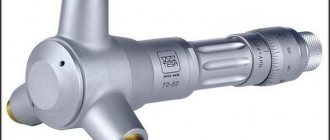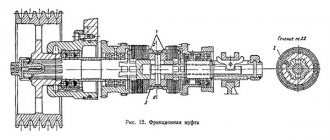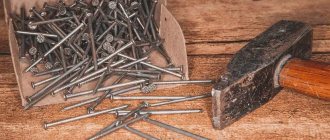Different types of tools are used for different purposes, including an axe.
The purpose of the ax varies depending on the type.
It will also have different parameters, sizes and shapes.
To choose the right tool for a specific job, it is worth studying its types.
The main components are the ax handle and the metal part, which has a blade and a butt.
Main types of axes
Each type of ax should be used only for its individual purpose.
Tools differ not only in size, but also in parameters, shape, and method of sharpening. Globally, axes can be divided into 3 large groups:
- Household.
- Special purpose axes.
- Combat.
Household axes
Ax for chopping.
In the household, an ax is most often used for chopping wood or for carpentry work. This is an indispensable tool in a private home or country house.
The cost is usually low. The tool itself is universal, the ax head is made of high-quality steel, sharpening is 50 degrees.
For felling forest
The tool for felling trees is the largest axe, with an ax handle of at least 90 centimeters and weighing more than three kilograms. Such a large weight of the tool is necessary to increase the impact force.
The work is carried out exclusively with two hands, for a strong and reliable fixation of the object. Using such an ax for other purposes is difficult and unsafe.
Large ax for felling wood.
Plotnitsky
A carpenter's or joiner's ax is a tool with a rounded, sharpened head, used on construction sites during the construction of log houses. To prevent the head from getting stuck in the tree, sharpening occurs at an angle of 35 degrees. The length is no more than 40 centimeters, the weight of the product is no more than one and a half kilograms.
Carpenter's axe.
Wood splitter
A heavy tool for chopping wood is called a cleaver. Its weight is about three kilograms, and sometimes five. The ax handle is large and long - for working with two hands.
A sledge hammer is used to split large logs. It is not sharpened, but the heavy head allows it to cope with a large tree. The ax handle is also impressive – more than 80 centimeters.
Large cleaving axe.
Bearded Ax
The bearded ax was used in old times as a weapon and household tool. Currently used as decoration. There is a modern modification of this ax with an additional “tongue” on the ax handle.
Hog axe.
For chopping meat
To chop bones and beat off meat, an ax with a wide head and a short ax is used. This tool is convenient for delivering precise blows. Most often, a hatchet for chopping meat is made of stainless steel. The weapon has a considerable weight and is sharpened at an acute angle for convenient cutting.
An ax for chopping meat.
Special axes
In addition to the main types, there are specific modifications used for specific cases:
- An ice ax is a specific tool for cutting ice.
- An army or sapper ax is a special type, the peculiarity of which is the weapon’s light weight and small size. Comes complete with a carrying case.
- One-handed roofing tool is a special tool used on construction sites when arranging the roof. The peculiarity of such a tool is the appearance of the head: one side is a narrow sharpened blade, the butt is a hammer.
- A throwing hatchet is classified as a combat, hunting or sports weapon. Currently, it is more often used as decorative attributes in the interior.
- A pickaxe is a tool for working stone or when working to extract precious minerals.
- An adze is an unusually shaped tool used to cut grooves in wood. Usually used by builders when constructing a log house.
Throwing tomahawk.
Hiking (tourist)
A hiking tool should be lightweight, convenient, versatile and compact. The marching ax has these characteristics. They can easily chop wood and meat, hammer a peg, and clear branches of bark.
This model usually has a rounded head for safe transportation in a bag.
A type of camping ax is a tourist one. It is smaller in size and has a similar appearance to the army one. The kit always includes a protective case.
Compact travel axe.
Hunting
Hunting axe.
There are a great many varieties of hunting axes. They are used both for chopping firewood and for butchering animal carcasses and skin.
The weight of the gun is no more than 750 grams, and the maximum length does not exceed 40 centimeters. These sizes make it much easier to use. They are made of all-metal, and the ax handle is supplemented with a special rubber insert.
Firefighter
Firefighters and rescuers often use a fire ax when extinguishing fires. It is all-metal, with rubber pads on the ax handle to protect the skin of your hands from burns. The weight of the product is no more than two kilograms, the head is blunt, as it is used to help in entering a room.
According to the regulations, such an ax should be at any enterprise, on the fire panel. It is always colored red.
Hatchet maintenance
Without a doubt, the most important part of maintenance is sharpening. To do this, use a classic whetstone or a special sharpener. Working with a well-sharpened ax is more accurate, safer and less tiring. If you often carry an ax, purchase a special case that will protect the blade and you from unauthorized cuts.
Ax device
The ax consists of two main parts:
- head;
- handle (axe).
The head, in turn, consists of:
- canvases;
- toe and heel (also called heel);
- blades;
- butt;
- cheeks and beards.
The ax handle can be divided into:
- eye;
- body;
- throat;
- tail.
The design of the instrument has not changed over time. The characteristics of individual elements influence the quality and method of work. For different purposes, you should select the appropriate ax parameters.
Ax device.
Working part
The working, metal part of the ax is called the head by professionals. One side is a sharp blade, the other is a butt. The top corner of the blade is the toe, and the bottom is the heel. In some models, the cheeks are highlighted - this is the side surface of the canvas.
The most important parameter of the head is the hardness of the metal. Made from medium-alloy tool steel that has undergone heat treatment.
The working part comes in three types:
- Extended. Designed for cutting wood or logs. A similar shape is found in felling or construction axes.
- Average. Used for cutting branches, trimming logs, cutting grooves. Gardening, hiking and carpentry axes are equipped with this type of head.
- Narrow. Used for chopping firewood, sharpening wedges, and preparing wood chips. An ax with a narrow working part is a cleaver.
The edge of the blade can be straight or rounded. In addition to the shape, the degree of sharpening is important. It all depends on the purpose of the tool.
Toporische
The ax handle or ax handle is the part that must withstand the impact and vibration after it.
- If we are talking about a wooden handle, then it is recommended to choose birch. It is light and stable. In addition to birch, species such as oak and ash are preferred.
- An important parameter for a wooden ax handle is the location of the fibers. It must be longitudinal.
- The ax handle should not contain any defects in the form of knots, cracks, or the like. Darkening from dampness or slight drying out is allowed.
- The most reliable, according to experts, are metal axes. Typically, this is a reliable all-metal construction. The handle is additionally rubberized, which ensures a secure grip.
- Many European manufacturers produce axes with fiberglass handles.
- Fiberglass has unique strength: it is not subject to rotting, corrosion, does not deform under mechanical stress, and does not react to aggressive environments. An ax with such an ax is easy to use - in case of a large impact, the material reduces the impact of vibration on the worker’s hands.
Battle axe.
How to choose an ax
The modification of a tool directly depends on the purpose of its use. The choice is made according to certain parameters:
- head shape and size;
- sharpening angle;
- length of the ax;
- ax handle material;
- comfortable ergonomic shape;
- weight (a heavy instrument is more powerful, a light one is more accurate);
- additional equipment (case).
Experts recommend purchasing different axes for different types of work:
- For processing wood, medium-sized equipment with a wooden ax is suitable.
- For a tourist gathering you need a durable and compact model.
- A heavy cleaver is ideal for chopping wood.
The variety of manufacturing companies often confuses the buyer when purchasing:
- The best among similar companies with centuries of experience are considered to be companies from Finland. Finnish hand tools have always been famous for their durability and resistance to various climatic conditions. Famous Finnish brands produce expensive models, but these are always reliable tools with the highest performance qualities.
- Manufacturers from Sweden and German companies produce products in the mid-price segment. Their products are high quality, lightweight, durable, reliable and will help out in any situation.
- There are many conscientious companies in Russia that produce universal tools for woodworking, tourist axes and more. The low and medium price category makes such products popular in the household market.
- Chinese firms have the lowest price. You should make a choice among such companies very responsibly, since there is a high probability of buying a fake.
For work, it is better to purchase several axes.
How to use
When working, you must strictly observe safety precautions. In addition, it is important to use the tool only for its intended purpose.
So, the rules of woodworking are as follows:
- When cutting down a short tree, you first need to remove the branches and attach a strong rope to the top, tilting it in the direction where the tree should fall. The cutting is carried out to the middle of the trunk on the side of the expected fall. Then they are sawed through with a saw.
- When chopping wood on a log, first of all, you should remove the branches in the direction from the bottom to the top.
- Logs are cut using a support placed under the impact site. First the blows are vertical, the next ones are at an angle of 40 degrees. When working, the log is rotated, uniformly approaching the middle.
- To hew a board, one end is fixed and hewn from top to bottom.
Recommendations for selection
How to choose the right carpenter's ax model? Once you decide to purchase a tool, you can check the quality of the material from which it is made. To do this, you need to hit the chopping part with a hard object. A thin and long sound indicates the high quality of the steel, which is hard enough and hardened according to all the rules, so it does not have to be constantly sharpened. Scratches and nicks from knots will not appear on the blade.
When purchasing a carpenter's cleaver for yourself, the buyer can check whether the chosen model is suitable. Taking the ax by the end, you need to lower your hand down. And then try to lift the brush and stretch it horizontally. If it doesn’t work out, or it’s difficult to do, then it’s better to take another tool.
The radius of the circumference of the blade of a carpentry tool should be 27-33 cm. This can be checked by drawing an arc of the specified radius onto paper using a protractor. The toe should have an angle of up to 90°, the head should be of medium length. A carpenter's ax has an ax handle 45-50 cm long. The blade should sit firmly on the ax handle.
A carpenter's cleaver is used to perform fine work with wooden material: grooves are cut out, blocks are trimmed to the required dimensions, etc.
Rules of care
In order for an ax to serve for a long time and efficiently, it should be properly and regularly maintained. The simplest professional tips for caring for your instrument are as follows:
- To prevent the tool from becoming covered with rust and corrosion, it should be treated with machine oil.
- The tool should be stored in a specially designated place, preferably in a case.
- Timely sharpening is a mandatory procedure.
- Regularly check the fixation of the head on the ax handle.
- Mandatory replacement of the ax handle if it breaks or if any defect is detected.
How to properly place an ax on an ax handle
Much depends in further work on the correct attachment of the ax to the ax handle.
You can do this yourself in several ways:
- using welding;
- production of tools from solid metal blanks;
- gluing with epoxy glue with curing in a special chamber;
- planting and wedging.
All-metal and welded options are the most reliable, however, such a tool is heavy and has a harsh feedback that the hand feels when working.
The glued version is produced in a factory, while the ax handle is made of polymer materials.
It is impossible to make such a tool at home.
Mounting an ax blade on a wooden handle is easiest to do yourself, but you need to know certain nuances and technology.
First, you need to select a handle for the future tool, fit it to the eye of the blade, prepare the wedges, and make several cuts on the ax handle.
Thread the handle through the eyelet so that it is flush with the top edge or protrudes slightly beyond it.
Next, you should pay attention to how to wedge the ax handle.
A wedge is inserted into the cut and driven into the wood using a hammer.
The same manipulations are carried out with the remaining wedges.
The upper part of the instrument is cleaned, sometimes filled with glue and painted.
Be sure to test the finished product: everything should hold tightly, not dangle and be well cushioned.
Handle with your own hands
It is not always possible to use a factory-made ax handle. In this case, you can make an ax handle with your own hands according to the drawings. In this case, you need to start by choosing the type of wood. Birch is considered the best option for such a tool, but maple or ash can be used.
When making a handle, you need to immediately adjust it to the dimensions of the butt of the existing blade. The main criterion should be the ease of working with the future tool. Therefore, special attention should be focused on compliance with the dimensions indicated in the drawings.
On a block of suitable dimensions that does not have knots or cracks, a sketch of the handle is made. Then the excess parts are sawed off and cut off with a knife. The place for planting under the butt must be trimmed and the entire product sanded to perfect condition.
Sharpening rules
For an ax to function properly, it must be sharpened regularly. Working with a blunt instrument is difficult and sometimes dangerous. However, there are certain models that do not need sharpening, for example, a cleaver or a fire ax.
When sharpening, several rules should be followed:
- Correct choice of the correct sharpening angle.
- To prevent the steel from softening, it is necessary to avoid overheating the head when sharpening.
- When sharpening on an electric sharpener, it is necessary to adjust the minimum speed and select the most even wheel.
- The head should be positioned towards the rotating circle.
- Do not use a grinder for sharpening. Due to high speeds, the steel may overheat.
- Use safety glasses and gloves to comply with safety precautions.
- A double-sided product should be sharpened on one side sharper and thicker on the other, this will allow it to be used universally.
The effectiveness of sharpening depends on the angle and shape given to the tip, as well as the sharpening method chosen.
The correct scheme for sharpening an ax.
Mechanical
Before starting work, you should prepare protective accessories from metal chips and dust. These include glasses, thick clothing, and a mask.
They sharpen an ax on an electric sharpener. An electric sharpener is an abrasive wheel that has a high rotation speed. To sharpen, follow these steps:
- Place the sharpening machine on a flat surface.
- Secure the axe. The tool should be positioned with its tip in the direction of rotation of the machine.
- Paint over the surface of the implement being processed with a marker.
- Bring the ax to the abrasive.
- Fix the desired angle with the nut and make several test turns of the circle.
- Check that the angle is set correctly. If the marker has been erased, then the setting is correct; if traces remain, then it should be continued.
- Sharpen until the flaws are completely eliminated, and you should regularly turn the head over, so the metal will be removed evenly.
- Chamfer. To do this, the product is rotated at an angle of 45 degrees.
- Repeat step 8 on the other side.
- After a certain time, a sharpener should be brought to the abrasive wheel, leveling the surface.
In this way, the ax is sharpened quickly and efficiently, but monitoring the temperature of the surface of the head is necessary. Otherwise the metal will overheat.
Manual method
When there is no equipment for sharpening, the head is sharpened by hand. A common method is a sharpener. It is placed between two bars, while holding the ax strictly vertically. The head is brought to the stone and moved along it.
Precautions during operation
It is important to remember that a well-sharpened ax can cause severe injuries. Therefore, when working with an axe, it goes without saying that you must have personal protective equipment.
You should use safety glasses, this will protect your eyes from small chips and shavings flying from under the axe, do not forget about durable and comfortable work shoes, gloves, and high-quality work trousers.
Special axes
A special tool serves specific purposes, so it has its own nuances and parameters that you should pay attention to when choosing.
It is used by specialists in carrying out certain events.
For felling forest
This type is used for deforestation.
It has a lot of weight to increase the impact force, making it difficult to use for other tasks.
High-strength steel is used in production.
Axes for cutting trees have a large, comfortable handle and a rounded blade.
They work with it with two hands, since it is quite large and heavy.
Double-sided ax
This type has two sharpened blades and is well balanced.
High carbon steel is used for raw materials.
This tool allows you to perform multiple tasks simultaneously.
It is often sharpened thinner on one side than on the other, since it is used for different tasks.
Can be used as a weapon (throwing projectile).
For chopping meat
The professional weapon has an impressive weight and a large blade made of dense steel.
It is sharpened at an acute angle so that you can easily chop meat with this ax.
The special design ensures an accurate hit when cutting up an animal carcass.
Marching
Hiking axes are small in size and lightweight because they are designed to be carried in a backpack and used for a variety of tasks.
Sometimes the blade is made rounded to ensure safety in the bag.
A mandatory attribute of the weapon is a case in which the ax is carried for survival in natural conditions.
This weapon is universal.
It will help in different situations: chopping firewood, hammering pegs, and cutting up meat.
Firefighter
Any enterprise must have an ax for fire shields on its stand.
This is regulated by fire safety regulations.
Distinctive features are the application of red color on the ax handle.
The weight of this ax is no more than 2 kg.
It must pass tests and have the appropriate certificate.
A firefighter is also a tool that firefighters use when extinguishing fires.
Most often it is attached to the rescuer's belt and has a fire-resistant fire ax holster.
It is made of metal and has a rubberized handle.
The blade of such a product is dull because it is used to penetrate the room.
Wood chopping
To prepare firewood, an ax is most often required in country houses and rural farmsteads, since even for frying barbecue, wood is the best fuel.
The blade of a wood ax is sharpened at an angle of about 40-60 degrees for better cutting.
The handle is most often made of wood, but can also be metal; the blade is made of hardened carbon steel
When asked which steel to choose, always pay attention to the manufacturer's seal mounted on the handle
The list of advantages of an ax can begin with the ease of working with it, since even a beginner can handle it. The second advantage is accessibility for the buyer in the sense that finding such an ax is as easy as shelling pears in any store.
There is also a wide price range for these axes, from which everyone will choose something for themselves.
The disadvantage of an ax of this format is that it is intended only for one type of work and cannot be used in other areas.
They cannot cut down a tree, and it is quite unsuitable for a butcher, since it is not so sharp. The disadvantages include the easy opportunity to get a low-quality fake, which the market is full of.
How to sharpen an ax correctly
For comfortable work, it is important that the product is sharp.
The sharpening procedure should be carried out regularly, since the tool becomes dull over time.
This can be done with a power tool or by hand using a sharpening stone, which provides greater sharpness.
However, there are types of tools that must remain blunt.
This applies to the cleaver and fire axe, otherwise it will get stuck in the wood.
Therefore, in order to understand how to sharpen an ax, you need to determine what type of product is used.
Choosing the right angle for sharpening is also an important point.
It is most often 20-30 degrees.
If you need a sharp blade, then a 35-degree angle is selected.
When sharpening, avoid overheating, otherwise the steel will soften and quickly wear out.
Mistakes during work are most often made not only due to the lack of the necessary skills, but also in a hurry.
When using a power tool, there is a high risk of overheating the metal, which changes its properties.
For an electric sharpener, you need to set the minimum speed and choose the most even circle.
The blade is held towards the rotation of the circle, and to avoid overheating it is periodically lowered into water.
Advice from professionals
Please pay attention to some simple tips when sharpening your tool:
- do not use a grinder for sharpening: it has high speeds, which will lead to overheating of the steel;
- work slowly, in a calm rhythm;
- use water for cooling;
- set the power tool to low speed;
- Proper storage helps keep the blade sharp longer: it is better to put the product in a case made of thick fabric or leather;
- To protect against corrosion, cover the metal part with oil and wax;
- wear safety glasses and gloves to protect yourself while working;
- a double-sided product is sharpened on one side, thicker on the other, in order to be able to use it for different purposes.
Sources
- https://VashNozh.ru/topory/vidy-toporov
- https://instrumentn.ru/stolyarno-slesarnyj-razdel/topor-i-ego-vidy
[collapse]
Tool characteristics
The device is versatile. With a carpenter's ax you can:
- cut down trees;
- chop wood;
- process wooden structures;
- butcher carcasses;
- perform carpentry work.
The design includes:
- blade based on hard carbon steel;
- handle - axe.
Weight varies between 0.8 – 3 kg. The chopping part of different models differs:
- shape;
- size.
The length and shape of the ax are influenced by the purpose. The ax handle should have a smooth surface. There should be no irregularities or nicks. The handle is:
- straight;
- curved.
The handle is made of hard wood:
- maple;
- ash;
- oak
The wooden handle is characterized by a high degree of vibration protection. This makes the work process easier. Disadvantages of a wooden handle:
- drying out;
- instability to mechanical damage.
The metal ax handle has a long service life. But it's difficult to use when it's cold outside.
Differences from a regular ax
Features of the carpenter model:
- trapezoidal shape of the chopping part; Carpenter's axe.
- rounded cutting edge (contributes to fine and precise work);
- thin and sharp blade (10 cm long);
- The sharpening angle reaches 35 degrees. A lower value causes jamming in the wood. At an angle of more than 35 degrees, more physical force is applied;
- the length of the ax handle ranges from 40 to 50 cm. The ax handle can be made of wood, plastic, or metal;
- the butt is massive.











